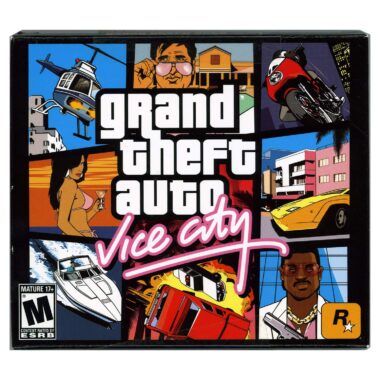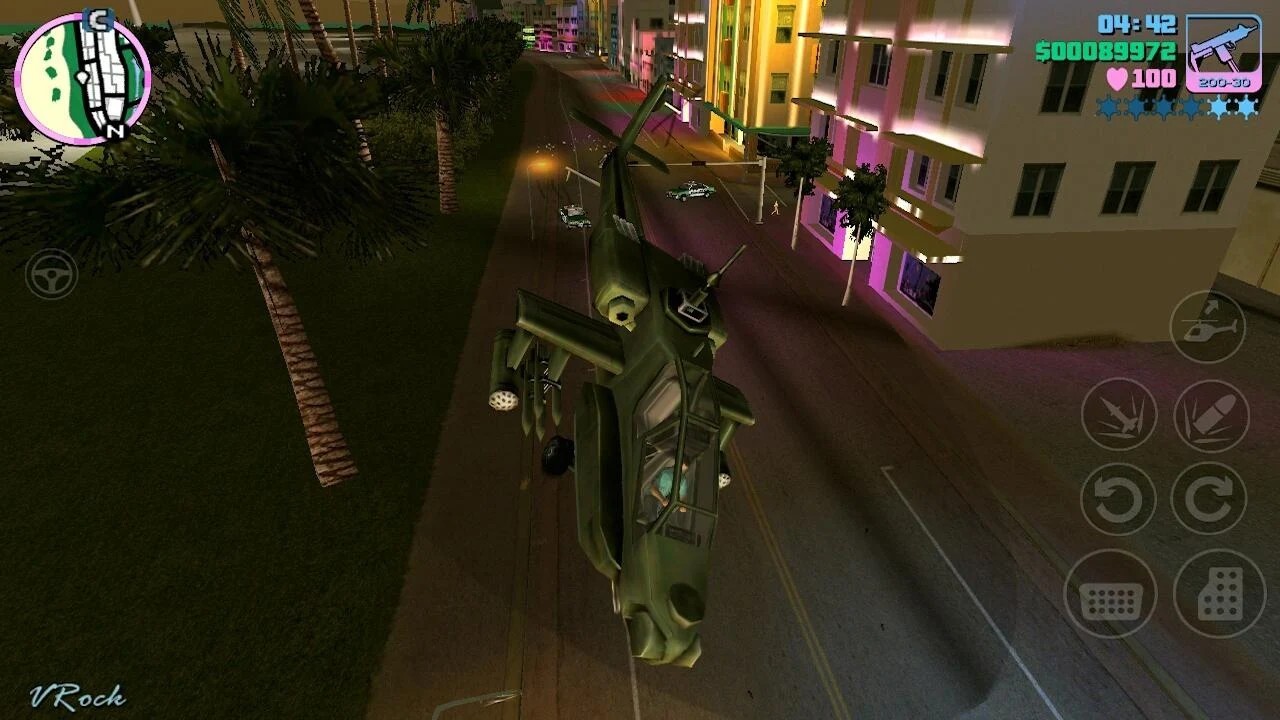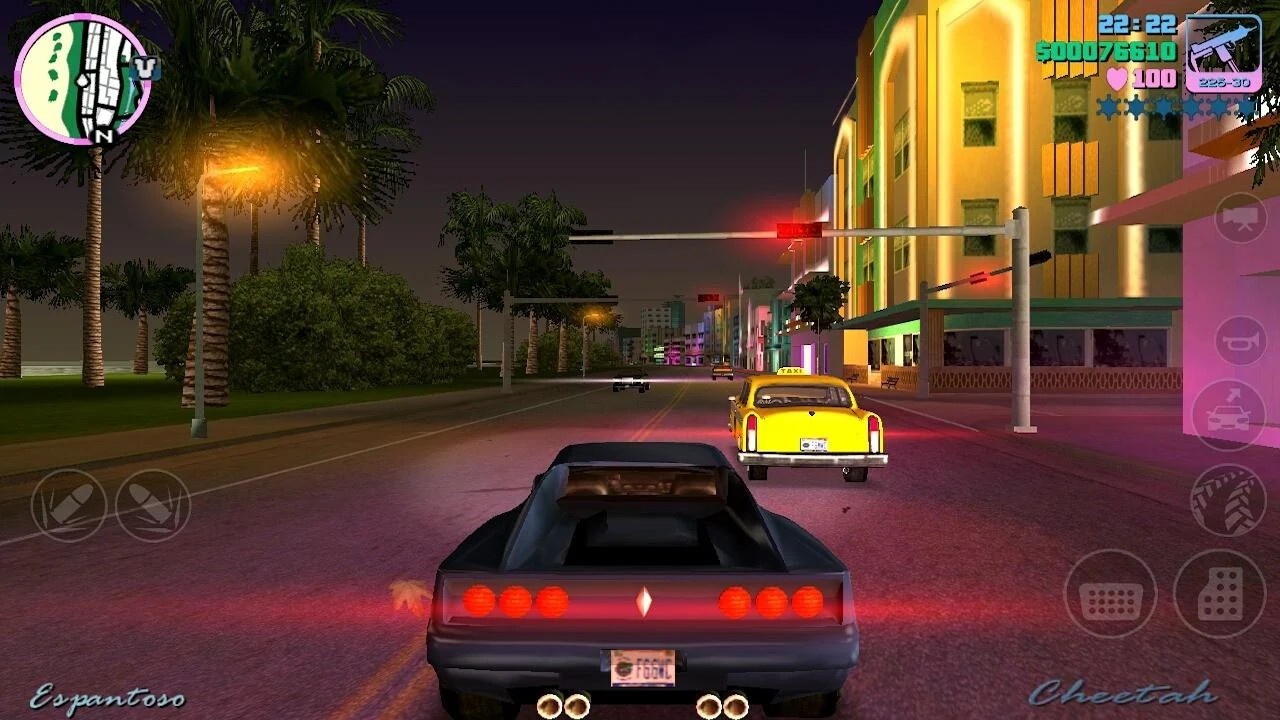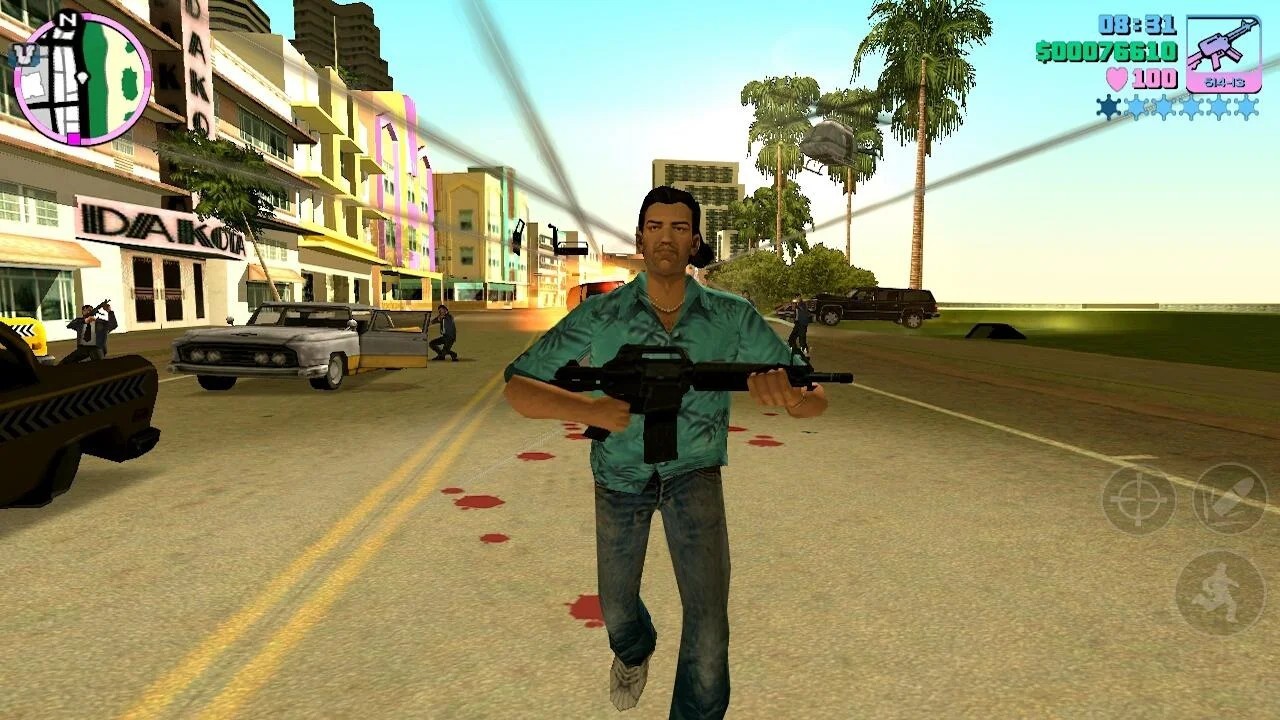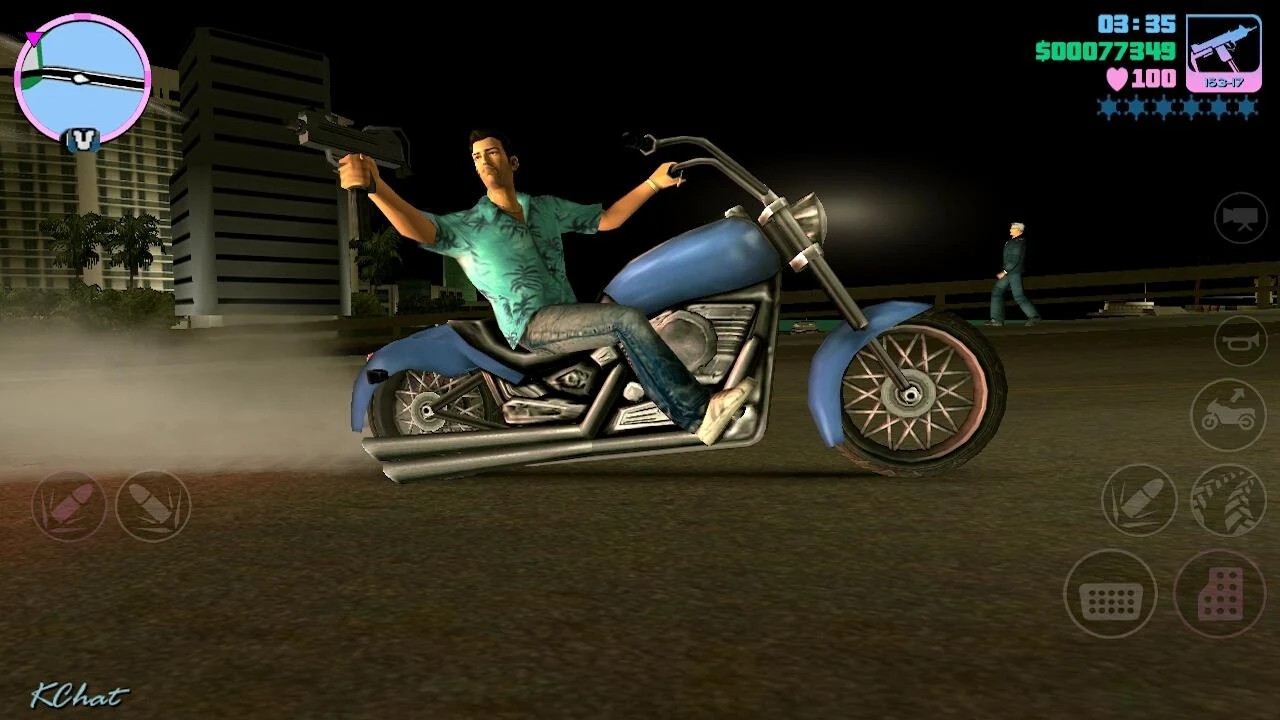Grand Theft Auto: Vice City – A Timeless Classic
Introduction
Grand Theft Auto: Vice City, released by Rockstar Games in 2002, has become one of the most beloved entries in the Grand Theft Auto series. Set in the vibrant, neon-soaked 1980s, this game captured the imagination of players with its open-world exploration, compelling storyline, and immersive gameplay. In this review game, we will delve into the various aspects that make Vice City a timeless classic.
The Setting and Atmosphere
The game’s setting in Vice City, a fictional representation of Miami, Florida, perfectly encapsulates the glamour and excess of the 1980s. The vibrant colors, neon lights, and the soundtrack filled with iconic 80s hits create an atmosphere that is both nostalgic and immersive.
Players can cruise through palm-lined streets, explore the beaches, or dive into the bustling nightlife. The example of a meticulously crafted environment showcases Rockstar’s attention to detail and ability to create a living, breathing world.
The Storyline
Vice City’s storyline follows Tommy Vercetti, a former mobster who is released from prison and sent to Vice City to oversee a drug deal. When the deal goes wrong, Tommy must navigate the criminal underworld to reclaim the money and establish his empire. The narrative is rich with memorable characters and plot twists, keeping players engaged from start to finish.
The game’s story is not just a backdrop; it is a driving force that propels players forward, making every mission and interaction significant. The character development and voice acting are top-notch, further immersing players in Tommy’s journey.
Gameplay Mechanics
Grand Theft Auto: Vice City introduced several gameplay mechanics that have become staples in the series. The open-world design allows players to take on missions at their own pace, explore the city, and engage in various side activities. The game offers a variety of vehicles, weapons, and customization options, providing endless opportunities for fun and mayhem.
The introduction of properties that players can purchase and use to generate income adds a strategic layer to the game. This example of integrating economic elements into the gameplay enhances the overall experience.
Graphics and Visuals
For its time, Vice City’s graphics were revolutionary. The game’s vibrant color palette, detailed character models, and realistic environments set a new standard for open-world games. While the graphics may seem dated by today’s standards, they still hold a certain charm and appeal.
The art direction, inspired by the 1980s, gives the game a unique aesthetic that stands out from other titles in the genre. The attention to detail in the city’s design, from the architecture to the advertisements, contributes to the immersive experience.
Soundtrack and Audio
One of the most iconic features of Vice City is its soundtrack. The game features a collection of hit songs from the 1980s, spanning various genres such as pop, rock, and hip-hop. The music not only enhances the atmosphere but also serves as a nostalgic trip for players who grew up during that era.
The voice acting and sound effects are equally impressive. The cast, including Ray Liotta as Tommy Vercetti, delivers outstanding performances that bring the characters to life. The sound design, from the roar of car engines to the ambient noise of the city, further immerses players in the game world.
Mission Variety
Vice City offers a diverse range of missions that keep the gameplay fresh and exciting. From high-speed chases to elaborate heists, each mission presents a unique challenge. The game also includes numerous side missions and activities, such as vigilante missions, taxi driving, and hidden package hunting.
This variety ensures that players always have something new to do, preventing the gameplay from becoming repetitive. The inclusion of different mission types and activities adds depth to the game, providing hours of entertainment.
Cultural Impact and Legacy
Grand Theft Auto: Vice City has left a lasting impact on the gaming industry. Its success paved the way for future entries in the series and influenced countless other open-world games. The game’s portrayal of the 1980s has become iconic, and its characters and setting are still fondly remembered by fans.
Vice City also sparked discussions about the portrayal of violence and criminal activities in video games. Despite the controversy, it remains a beloved classic that continues to be celebrated by gamers and critics alike.
Comparison with Other GTA Titles
While each Grand Theft Auto game offers a unique experience, Vice City stands out for its distinct setting and atmosphere. Compared to its predecessor, GTA III, Vice City introduced significant improvements in graphics, gameplay mechanics, and storytelling.
In comparison to later titles like GTA V, Vice City may lack some of the technical advancements, but its charm and nostalgia make it a favorite among many players. The game’s focus on the 1980s and its memorable characters give it a unique identity within the series.
Criticisms and Shortcomings
Despite its many strengths, Vice City is not without its flaws. Some players have criticized the game’s control mechanics, which can feel clunky by modern standards. The aiming and shooting mechanics, in particular, have been points of contention.
Additionally, the game’s missions can sometimes feel repetitive, with certain tasks requiring players to traverse the city multiple times. However, these shortcomings do little to diminish the overall enjoyment and impact of the game.
Conclusion
Grand Theft Auto: Vice City remains a landmark title in the gaming industry. Its rich storytelling, immersive atmosphere, and innovative gameplay mechanics have cemented its place as a classic. Despite its age, the game continues to be celebrated for its unique portrayal of the 1980s and its lasting impact on the open-world genre.

